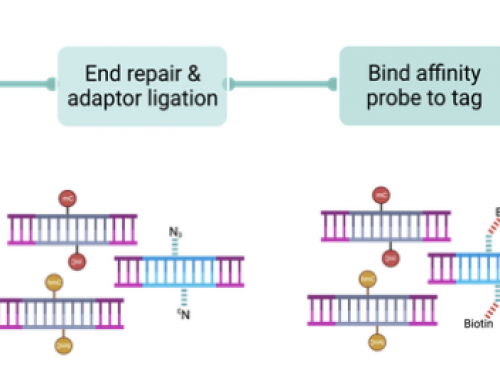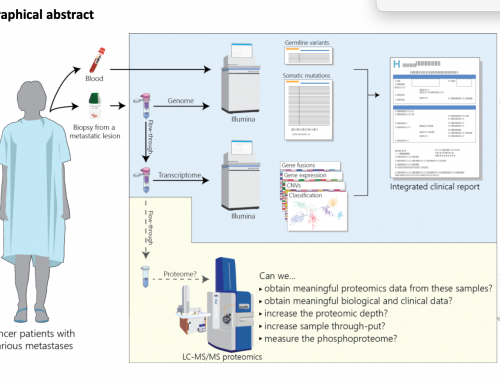The Bioanalyser has been a great tool for quality control of NGS libraries. Users can clearly see if they have prepared a high-quality library, if there is lots of adapter-dimer present and if the insert size is what they expected. Unforunately running the Bioanalyser is a bit of a pain once you have more than 12 or 24 libraries.
In my lab we are now preparing 24, 48 and 96 libraries in each batch. QC of these has become too much work using current methods so we looked at alternatives. This included the Caliper LabChip GX, Shimazdu MultiNA, Agilent ScreenTape, Qiagen QIAxcel and Advanced Analytical’s Fragment Analyser (see the bottom of this post for a full list of features).
From our analysis of the system features we asked for demonstrations of the Caliper and Advanced Analytical instruments. These two both appeared to give us the throughput and sensitivity we need, both systems worked well and I know of several labs using these instruments very successfully. However we decided not to invest in a high-throughput Bioanalyser.
Why not and what do we want from library QC: most users want sequence results as soon as possible and are happy with some libraries failing so for some the QC is seen as a bar that gets in the way of their science. My lab wants to satisfy all users and return the highest percentage possible of high quality sequencing runs. Generating 40M reads of a poor library is no use to anyone.
With the introduction of 96 and 384 index kits from companies like Bioo Scientific and with Illumina finally catching up with the TruSeq HT kits I think we are ready to ditch gel-based analysis. Instead we will start using a QC pipeline that will use the data from a single lane analysis of up to 96 libraries. We can look at computed insert-size, verify quantification by checking pooling ratios, screen for adapter-dimer or contamination with other genomes and make sure duplication rates are not too high. Even with 96 samples we should get around 1-2M reads each, and some readers of this blog may remember when 1 M reads was considered enough for ChIP-seq analysis, let alone QC! There are also some hints that 1M reads might be acceptable for basic differential gene expression analysis of highly expressed transcripts.
We’ll be slowly retiring the Bioanalyser type analysis of libraries and using the qPCR quantification as a simple QC tool for pass/fail decisions. We might even get to a point that we only quantify the final pool after mixing equal volumes of all 96 libraries, such that cluster density is spot-on. Then we can use the sequence demultiplexing to indicate the actual balance of indexes to re-pool for the final high read number sequencing.
High Throughput Bioanalyser Platform Features
Caliper – Labchip GX
- High throughput bioanalyser with 96 and 384 well compatibility
- Asseses RNA quality and gives exact sizing and quantification of DNA fragments.
- Can analyse 96 samples in less than 1 hour
- RNA metrics are used to calculate the RGS value (RNA quality score) which has been validated to correlate with the agilent bioanalyser RIN score. This would be beneficial since users are already familiar with a RIN value for assessing RNA quality.
- Resolution down to 5bp and sensitivity of 0.1 ng/ul
- Can visualise the results on electropherogram or gel view similar to Agilent 2100.
- Data can be viewed in tabular form which can be easily exported/uploaded onto our LIMS system.
- High sensitivity kit also available
- There is a barcode reader for sample tracking which would be important when running large numbers of samples.
Shimadzu Biotech – MCE 202 MultiNa
- This is a microchip electrophoresis system for DNA/RNA analysis.
- Reusable microchips are used which could reduce running and consumable costs.
- 120 samples can be run simultaneously across 4 separate microchips with 80 seconds per sample processing speed.
- It can also perform automatic or manual reanalysis of the samples as seen with the agilent bioanalyser and can export the results in a csv. format.
- The Lab901 ScreenTape system is a fully automated system for gel electrophoresis. The ScreenTape instrument loads, separates, images and analyses both DNA and RNA samples. It does this by loading each sample onto a screentape each of which contain 16 microgels which align to built in electrodes and imaging system.
- Only 1 ul of sample is required and analysis takes 1 minute per sample. It is fully automated with prepacked reagents so there is no gel preparation or chip priming.
- Different screentapes are available for DNA and RNA analysis.
- For RNA analysis, quality is displayed as the screentape degradation value (SDV)
- A microcapillary electrophoresis system, which is fully automated and can process up to 96 samples per run. Separation is performed in a capillary of precast gel cartridge which are reusable.
- Sensitivity of 0.1ng/ul Resolution down to 3-5 bp.
- Sample consumption is less than 0.1ul, although the minimum sample volume to load for analysis is 10ul.
- 96 samples can be processed in approximately 1 hour.
- The data can be viewed as electropherogram or gel images.
Advanced Analytical –Fragment Analyser
- is a fluorescence-based capillary electrophoresis instrument for both sizing and quantifying nucleic acids (DNA and RNA).
- Can run either 12 samples or 96 samples at a time
- The instrument provides space for up to six 96-well plates
- Can be used to quantify and qualify NGS fragments, RNA, genomic DNA and also for mutation detection, Microsatellite (SSR) analysis.
- Various capillary lengths can be used, depending on the application, required resolution and desired speed of analysis. Longer arrays provide resolution down to 2 bp for fragments under 300 bp in length. Shorter arrays still provide good resolution with run times as fast as 15 minutes
- PROSizeâ„¢ software is used to analyse the data and this can be viewed as a gel view, electropherogram or a results table.
- The data is exportable and can be linked to the LIMS.










Interesting article: "We can look at computed insert-size, verify quantification by checking pooling ratios, screen for adapter-dimer or contamination with other genomes and make sure duplication rates are not too high."
>> What kind of software are you thinking of using for doing this?
How did this pan out? Was the transition away from visual QC completed successfully?
Yes, rather than check each library we only look at a random sample. RNA-seq in particular gives almost the same results every time so we tend not to worry. However for some applications it can be worth doing more QC and we're looking at bringing this back for exomes.